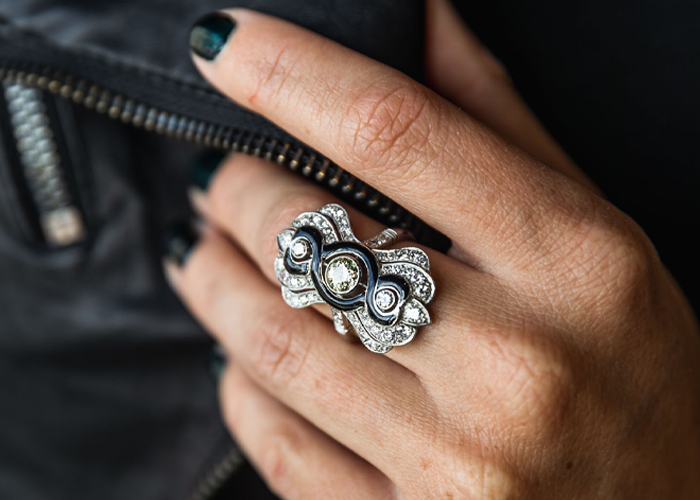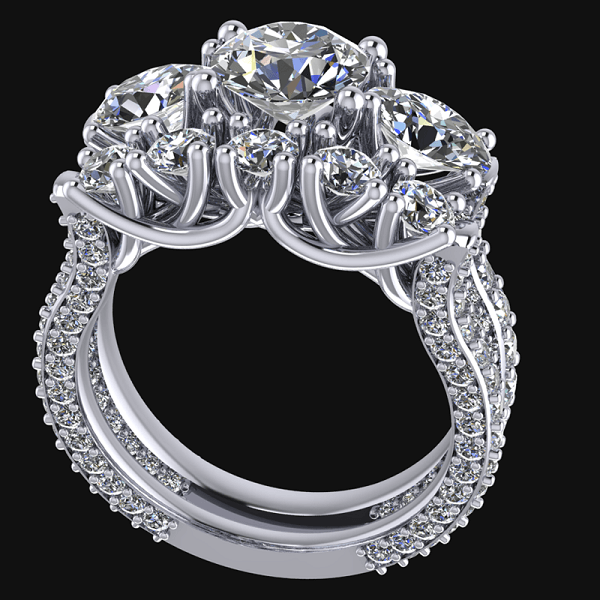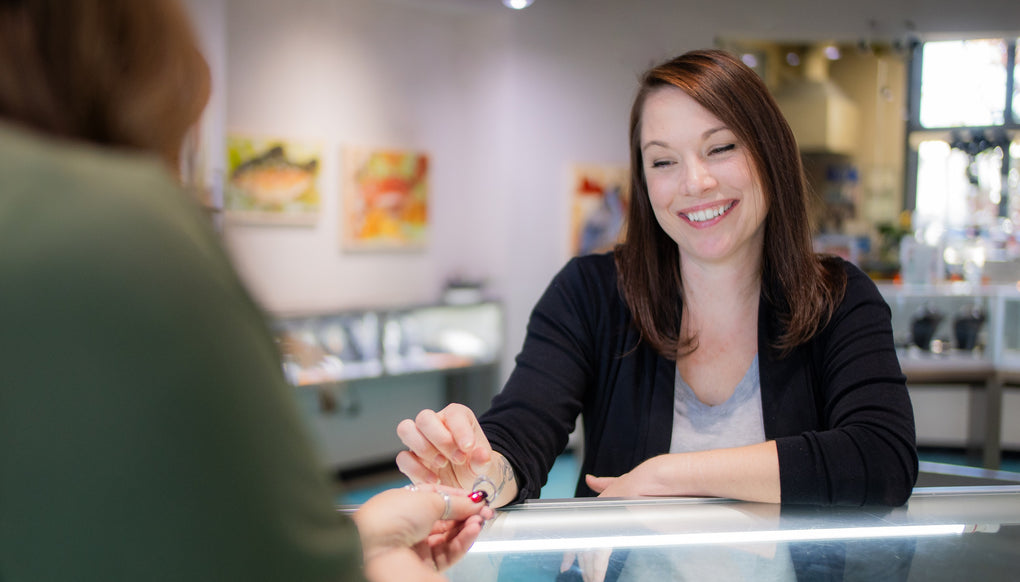4C's of Diamonds
CUT | CARAT | COLOR | CLARITY
To determine the cut grade of the standard round brilliant diamond – the shape that dominates the majority of diamonds, gemologists can calculate the proportions of facets that influence the diamond’s face-up appearance by using a grading system called the “4 C’s.” These proportions allow us to evaluate how successfully a diamond interacts with light to create desirable visual effects such as:
Brightness: Internal and external white light reflected from a diamond Fire: The scattering of white light into all the colors of the rainbow Scintillation: The amount of sparkle a diamond produces, and the pattern of light and dark areas caused by reflections within the diamond.
The craftsmanship of the diamond, including its weight relative to its diameter, its girdle thickness (which affects its durability), the symmetry of its facet arrangement, and the quality of polish on those facets are also taken into account.
Carat Weight
Each carat can be subdivided into 100 ‘points’. This allows very precise measurements to the hundredth decimal place. A jeweler may describe the weight of a diamond below one carat by its ‘points’ alone. For instance, the jeweler may refer to a diamond that weighs 0.25 carats as a ‘twenty-five pointer‘. Diamond weights greater than one carat are expressed in carats and decimals. A 1.08 carat stone would be described as ‘one point oh eight carats’.
All else being equal, diamond price increases with diamond carat weight, because larger diamonds are more rare and more desirable. But two diamonds of equal carat weight can have very different values (and prices) depending on three other factors of the diamond 4Cs: Carat, Cut, Color, Clarity.
It’s important to remember that a diamond’s value is determined using all of the 4Cs, not just carat weight.
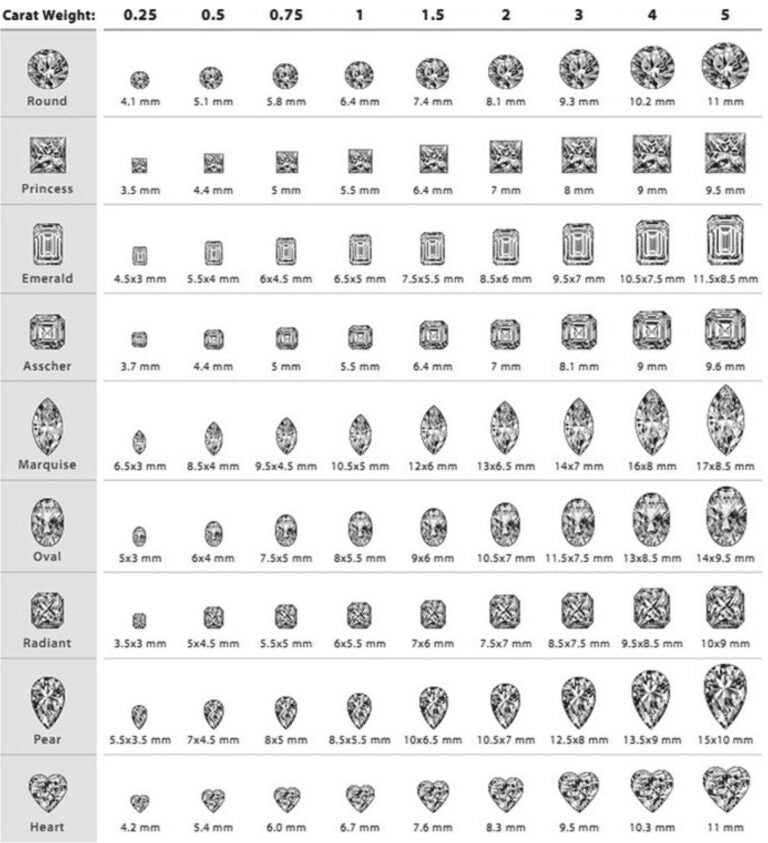
Diamond Cut
Cut is probably the most important diamond characteristic as well as the most difficult to evaluate. The cut is what makes diamonds sparkle and that sparkle, unquestionably, is the “thing” that diamonds have that dazzles us. You could have a large, colorless, perfectly unflawed diamond but a poor cut could make the diamond twinkle less brilliantly than one of much lower quality. In fact, two diamonds of equal carat weight could have values that differ by as much as 50% due solely to the quality of the cut.
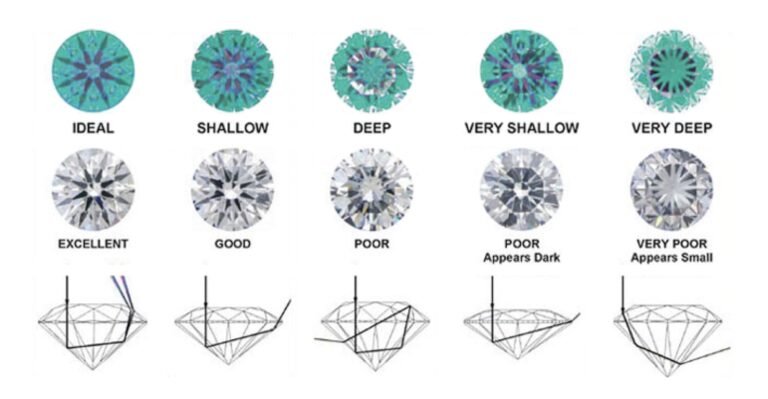
Diamond Clarity
The GIA Clarity Scale contains 11 grades, with most diamonds falling into the VS (very slightly included) or SI (slightly included) categories. In determining a clarity grade, the GIA system considers the size, nature, position, color or relief, and quantity of clarity characteristics visible under 10× magnification.

Diamond Color
The scale begins with the letter D, representing colorless, and continues, with increasing presence of color, to the letter Z. Many of these color distinctions are so subtle that they are invisible to the untrained eye; however, these distinctions make a very big difference in diamond quality and price.

Diamond Certificate
A diamond certificate, also called a diamond grading report, is a report created by a team of gemologists. The diamond is evaluated, measured, and scrutinized using trained eyes, a jeweler’s loupe, a microscope, and other industry tools. A completed certificate includes an analysis of the diamond’s dimensions, clarity, color, polish, symmetry, and other characteristics. Many round diamonds will also include a cut grade on the report.
There are different types of certifications. GIA – Gemological Institute of America. AGS – American Gemological Society. HRD Antwerp – Hoge Raad voor Diamant. EGL – European Gemological Laboratory.
IGI – International Gemological Institute
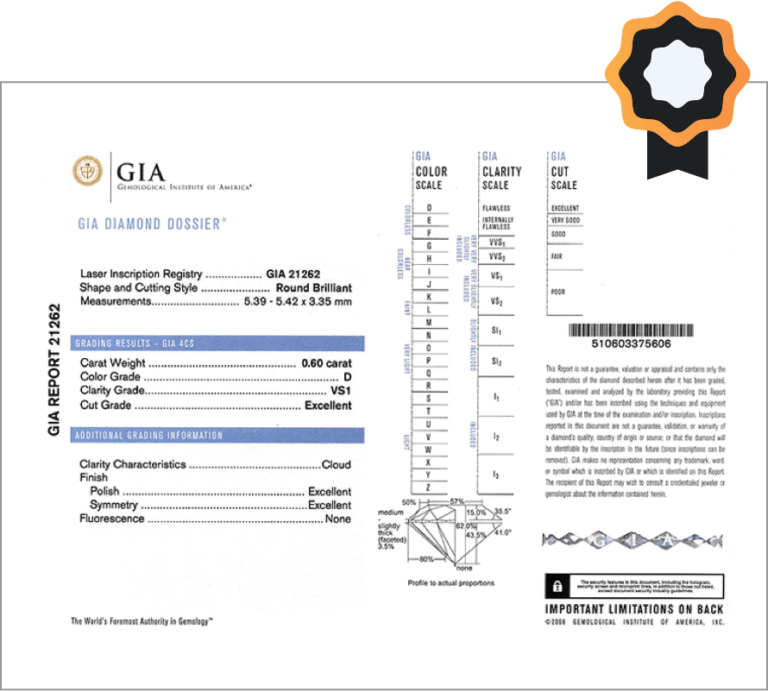
DIFFERENCE BETWEEN A DIAMOND GRADING REPORT AND AN APPRAISAL?
A diamond’s physical attributes should be graded by a reliable independent lab such as GIA or AGS which issue a Diamond Grading Report or Certificate. This report does not give you the retail replacement value that you need for insurance purposes. You may also receive an appraisal or assessment of your stone from a jewelry store or independent appraiser. Both are important, but be sure to get the Diamond Grading Report rather than just an appraisal before purchasing your very special diamond.
There are different types of certifications. GIA – Gemological Institute of America. AGS – American Gemological Society. HRD Antwerp – Hoge Raad voor Diamant. EGL – European Gemological Laboratory.
IGI – International Gemological Institute
